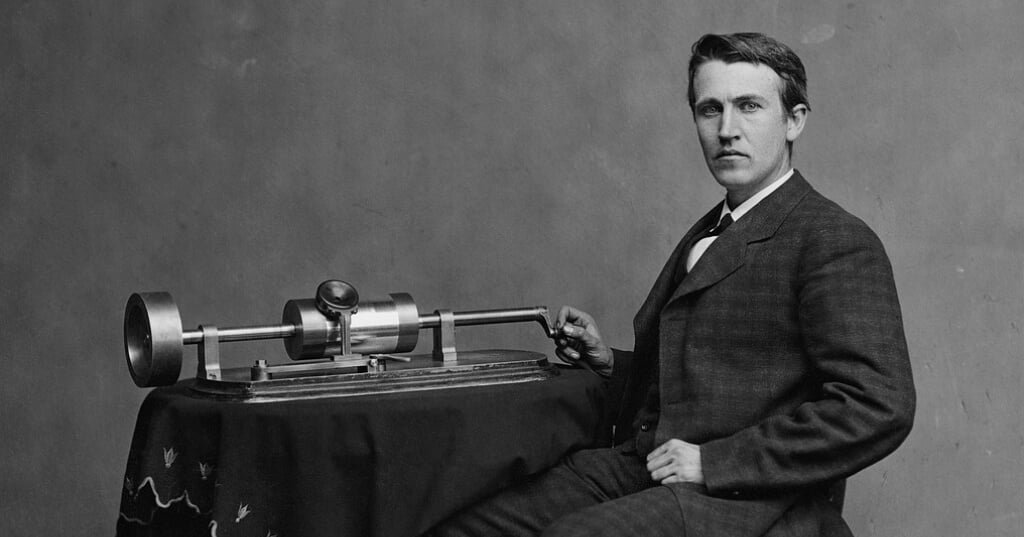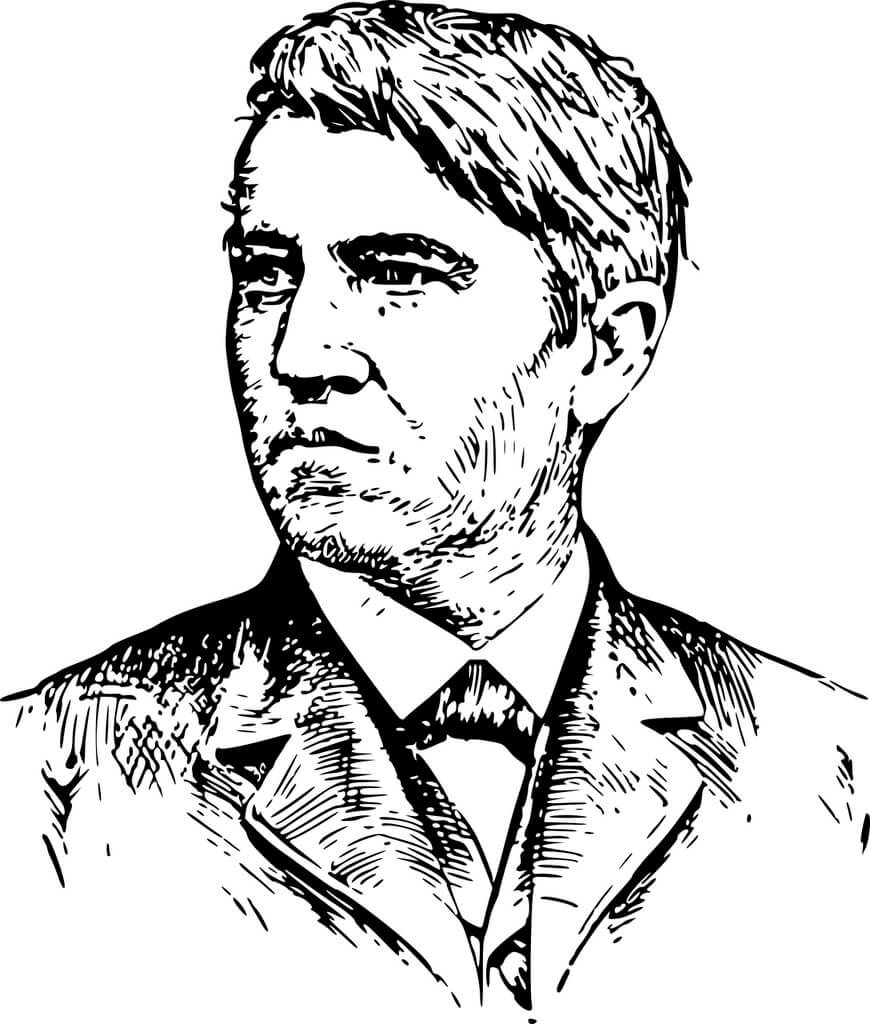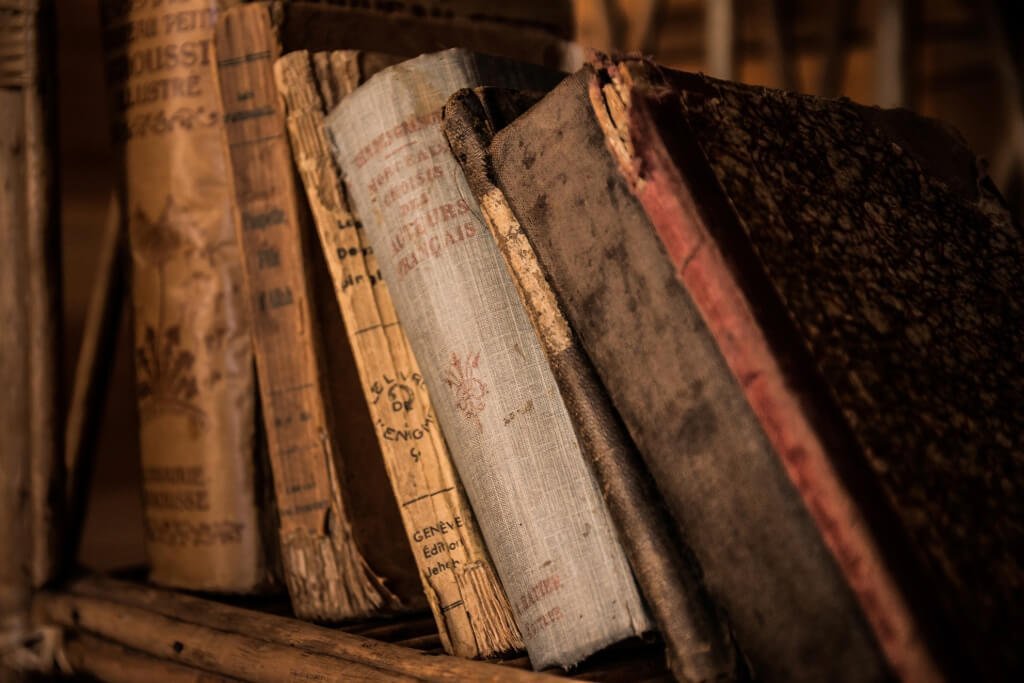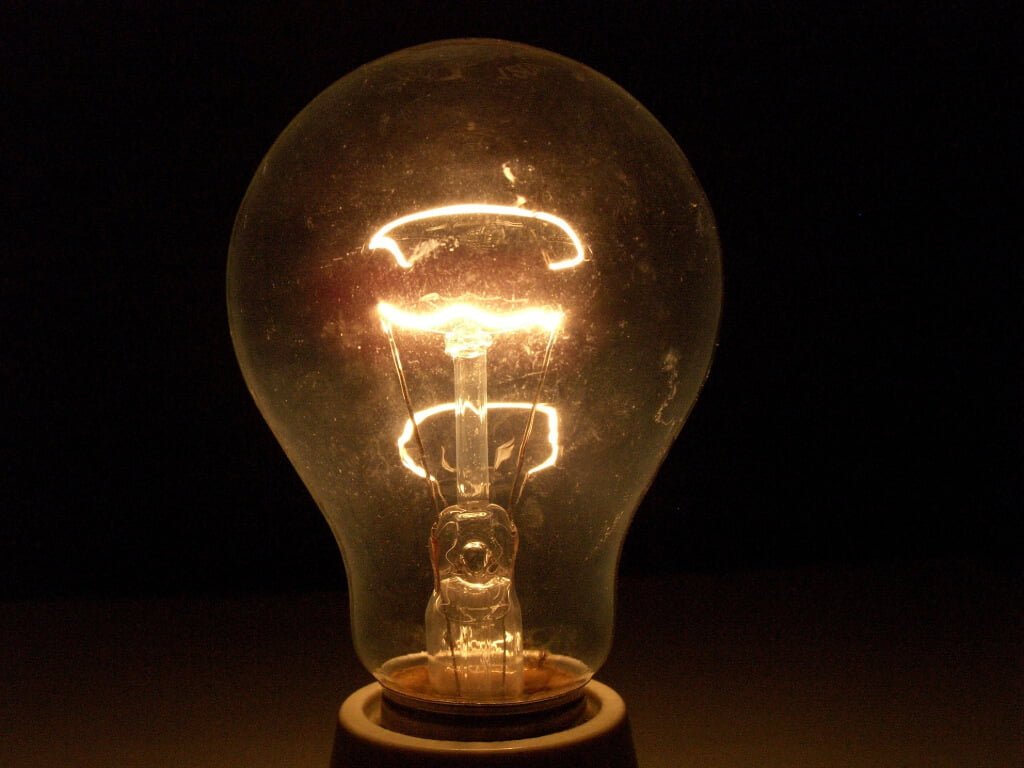Thomas Edison, a name synonymous with innovation and brilliance, stands as one of the most influential inventors in history. Born on February 11, 1847, in Milan, Ohio, Edison’s impact on modern society is immeasurable. His tireless pursuit of knowledge and groundbreaking inventions have left an indelible mark on the world, earning him the moniker “The Wizard of Menlo Park.”

Early Life And Education
Thomas Alva Edison’s early years were marked by curiosity and a thirst for knowledge. Despite limited formal education, Edison’s inquisitive mind led him to experiment and tinker with various devices from a young age. By the time he was a teenager, he had set up a small chemistry lab in the basement of his family’s home. This passion for experimentation foreshadowed the prolific inventor he would become.
In the early stages of his life, Thomas Edison faced challenges, yet his resolve stayed unwavering despite the development of a hearing impairment in childhood. Rather than hindering him, this impairment served as a catalyst, intensifying his insatiable thirst for knowledge. Edison’s resilience is apparent in his memorable declaration: “I have not failed. “I’ve identified 10,000 methods that are not effective.” This declaration embodies his resolute commitment to surmounting challenges and unveiling innovative solutions.
The Inventive Journey Begins
Edison’s journey into the world of invention truly began when he moved to Menlo Park, New Jersey, and established the world’s first industrial research laboratory in 1876. This marked a turning point not only in his career but also in the history of invention. The laboratory served as a hotbed of creativity, where Edison and his team worked on a myriad of projects, from improving the telegraph to creating the phonograph.
One of Edison’s most notable early inventions was the phonograph, patented in 1878. This groundbreaking device could record and reproduce sound, laying the foundation for the modern music industry. The invention showcased Edison’s ability to combine scientific knowledge with practical applications, a skill that would define his career.
The Iconic Light Bulb
Perhaps Thomas Edison’s most iconic invention is the electric light bulb. Although he did not invent the concept, he perfected it and made it commercially viable. After countless experiments and iterations, Edison developed a long-lasting, practical incandescent light bulb, receiving a patent for it in 1880. This invention revolutionized the way people lived, worked, and socialized, bringing light to homes and streets around the world.
The development of the light bulb was not without challenges. Edison faced criticism and skepticism throughout the process, but his perseverance paid off. The widespread adoption of electric lighting marked a pivotal moment in history, replacing gas lamps and candles and transforming cities into vibrant, illuminated spaces.
The Birth Of The Motion Picture Industry
Edison’s innovative spirit extended beyond the realm of electricity. In 1891, he patented the Kinetoscope, an early motion picture device that allowed individuals to view moving images. This invention laid the groundwork for the birth of the motion picture industry, influencing filmmakers and shaping the entertainment landscape for generations to come.
Edison’s contributions to cinema did not stop with the Kinetoscope. He continued to develop and improve motion picture technology, including the invention of the kinetophone, an early attempt at synchronized sound in film. Edison’s impact on the entertainment industry is immeasurable, as his inventions paved the way for the immersive and captivating cinematic experiences we enjoy today.
The Legacy Of Thomas Edison
Thomas Edison’s legacy extends far beyond the tangible products of his inventions. His approach to innovation, characterized by relentless experimentation and problem-solving, has inspired countless inventors and entrepreneurs. The Menlo Park laboratory, often referred to as “Edison’s invention factory,” set the precedent for collaborative research environments that continue to drive technological advancements today.
The impact of Thomas Edison is apparent in his approach to failure. Rather than regard setbacks as insurmountable obstacles, he saw them as invaluable chances to gain knowledge and perfect his concepts. Summed up in his renowned quote, “I have not failed. “I’ve discovered 10,000 ways that won’t work,” and his mindset is an abundant wellspring of inspiration for individuals facing challenges across various fields.

Thomas Edison’s Later Years And Honors
As Edison’s career progressed, he continued to contribute to various fields, including the development of storage batteries and the establishment of the first electric power distribution system. His achievements did not go unnoticed, and Edison received numerous accolades and honors throughout his life, including the Congressional Gold Medal.
In 1931, at 84, Thomas Edison passed away, leaving behind a legacy that continues to shape the world. His impact on technology, innovation, and industry remains unparalleled, and his name is forever etched in the annals of history.
Exploring Thomas Edison’s Education
Thomas Edison, often hailed as one of the greatest inventors in history, is renowned for his countless contributions to modern technology. While his inventions like the phonograph and the electric light bulb have left an indelible mark on society, Edison’s approach to education was equally groundbreaking. In this article, we delve into the fascinating journey of Thomas Edison education, exploring how his unconventional methods and insatiable curiosity shaped his path to success.
Early Life And Education
Born in 1847 in Milan, Ohio, Thomas Edison’s early life was marked by curiosity and experimentation. Despite attending formal schooling for only a few years, Edison’s inquisitive nature thrived outside the confines of traditional education. His formal education was limited due to his struggle with formal learning environments. However, this setback did not deter his thirst for knowledge.
Self-Education Journey
Edison’s journey took a pivotal turn when he embarked on a path of self-education. Fueled by a voracious appetite for learning, he devoured books on a wide range of subjects, from science and mathematics to philosophy and literature. Thomas Edison education was characterized by his relentless pursuit of knowledge beyond the classroom, often spending countless hours in his makeshift laboratory conducting experiments and tinkering with machinery.

Apprenticeship And Practical Learning
At the age of 15, Edison’s thirst for knowledge led him to a job as a telegraph operator. This apprenticeship not only provided him with practical skills but also exposed him to the cutting-edge technology of the time. Immersed in the world of telegraphy, Edison honed his skills in electrical engineering and gained invaluable insights that would later influence his inventions. His experience as a telegraph operator marked a significant chapter in Thomas Edison education, emphasizing the importance of hands-on learning and real-world experience.
The Role Of Failure And Persistence
Central to Thomas Edison education was his unique perspective on failure. He famously remarked, “I have not failed. I’ve just found 10,000 ways that won’t work.” Edison viewed failure not as a setback but as a necessary step on the path to success. His unwavering persistence and resilience in the face of adversity propelled him forward, allowing him to overcome countless obstacles on his journey to innovation.
Impact On Innovation And Entrepreneurship
Thomas Edison’s unconventional approach to education laid the foundation for his groundbreaking inventions and entrepreneurial ventures. His ability to think outside the box and embrace experimentation paved the way for innovations that transformed the world. From the incandescent light bulb to the phonograph, Edison’s inventions revolutionized industries and shaped the course of history, leaving an indelible mark on society.
Lessons From Edison’s Education
The legacy of Thomas Edison education extends far beyond his lifetime. His emphasis on curiosity, experimentation, and persistence serves as a timeless lesson for aspiring innovators and lifelong learners alike. By embracing Edison’s principles, individuals can unlock their full potential and make meaningful contributions to the world.
Thomas Edison’s education was a testament to the power of curiosity, experimentation, and perseverance. His unconventional approach to learning paved the way for some of the most significant technological advancements in history. As we reflect on the journey of Thomas Edison education, let us draw inspiration from his legacy and strive to cultivate a thirst for knowledge that knows no bounds.
Unveiling The Family Dynamics Of Thomas Edison
Thomas Edison is celebrated worldwide for his groundbreaking inventions and contributions to modern technology. However, behind the genius of this prolific inventor lies a story of family, love, and influence that often remains in the shadows. In this article, we delve into the intricate web of relationships within the Thomas Edison family, shedding light on the familial dynamics that shaped the life and legacy of one of history’s greatest innovators.

Early Family Life
The foundation of Thomas Edison’s life was built upon the love and guidance of his parents, Samuel and Nancy Edison. Born in Milan, Ohio, Edison grew up in a modest household where familial bonds were paramount. Despite financial challenges, the Edison family prioritized education and encouraged young Thomas to explore his interests and passions. In this nurturing environment, Edison’s curiosity and ingenuity began to flourish, laying the groundwork for his future achievements.
Marriage And Children
Thomas Edison’s own family life began when he married Mary Stilwell in 1871. Together, they embarked on a journey of companionship and shared dreams. Despite the demands of Edison’s burgeoning career, the couple maintained a strong bond, with Mary providing unwavering support and understanding. The Edison family expanded with the birth of their children, adding new dimensions to their familial dynamics. As Edison’s fame and success grew, so too did the responsibilities and joys of family life.
Relationship With Parents And Siblings
Throughout his life, Thomas Edison maintained a close relationship with his parents and siblings. Despite his relentless pursuit of innovation, Edison remained grounded by his familial ties. His parents’ unwavering belief in his abilities served as a source of inspiration and motivation during times of uncertainty. Similarly, Edison’s relationships with his siblings were characterized by mutual respect and support, with each member of the Thomas Edison family contributing to his journey in their own unique way.
Impact Of Family On Edison’s Career
The influence of Thomas Edison’s family extended far beyond the walls of his childhood home. The love, encouragement, and support he received from his family played a pivotal role in shaping his career and accomplishments. From his earliest experiments in his family’s basement to the creation of the first electric light bulb, Edison’s family stood by him every step of the way. Their belief in his vision empowered him to overcome obstacles and achieve greatness, leaving an indelible mark on the world.
Legacy And Family Heritage
The legacy of Thomas Edison extends beyond his inventions to encompass the enduring impact of his family heritage. Today, descendants of the Thomas Edison family continue to honor his memory and preserve his legacy for future generations. Through museums, educational programs, and family archives, they ensure that the spirit of innovation and entrepreneurship that defined Thomas Edison’s life lives on.
Influence On Modern Perspectives
The story of Thomas Edison’s family offers valuable insights into the power of familial support and encouragement in shaping the lives of individuals. In an age where success is often measured by individual achievement, the importance of family dynamics cannot be overstated. By studying the familial relationships of historical figures like Thomas Edison, we gain a deeper understanding of the interconnectedness of personal and professional lives, inspiring us to cultivate stronger bonds within our own families.
The story of Thomas Edison’s family illuminates the intricate interplay between personal relationships and professional achievements. From his humble beginnings in a loving household to his rise as a renowned inventor, Edison’s family played a central role in shaping his journey. As we reflect on the legacy of the Thomas Edison family, let us remember the power of love, support, and encouragement in fueling the dreams of innovators and shaping the course of history.
Illuminating The Story Of The Thomas Edison Light Bulb
In the annals of history, few inventions shine as brightly as the Thomas Edison light bulb. Thomas Edison, often dubbed the “Wizard of Menlo Park,” revolutionized the world with his groundbreaking invention, forever changing the way we illuminate our lives. From its humble beginnings to its widespread adoption, the journey of the Thomas Edison light bulb is a testament to human ingenuity and perseverance.
The Need For Innovation In Lighting
Before the advent of the light bulb, lighting was a cumbersome and often dangerous affair. Candles and gas lamps provided limited illumination, while early electric lighting systems were unreliable and expensive. There was a pressing need for a safer, more efficient lighting solution that could brighten homes, streets, and workplaces alike.
Early Experiments And Challenges
Thomas Edison embarked on a quest to solve the lighting dilemma, conducting countless experiments in his laboratory at Menlo Park. His initial attempts to create a practical light bulb were met with numerous challenges, including finding the right filament material and creating a vacuum-sealed glass bulb. Despite setbacks, Edison persisted, driven by his unwavering belief in the potential of electric lighting.

Breakthrough: Invention Of The Incandescent Light Bulb
Edison’s perseverance paid off when he successfully invented the incandescent light bulb in 1879. This revolutionary device consisted of a thin filament housed within a glass bulb evacuated of air, which would glow when an electric current passed through it. The Thomas Edison light bulb was a triumph of engineering and innovation, heralding a new era of illumination.
Patent Battles And Commercialization
Edison’s invention of the light bulb sparked a flurry of patent battles as rival inventors sought to stake their claim to the technology. Despite legal challenges, Edison emerged victorious and established the Edison Electric Light Company to commercialize his invention. The widespread adoption of electric lighting quickly followed, transforming cities and towns across the globe.
Evolution And Advancements In Lighting Technology
Since the invention of the Thomas Edison light bulb, lighting technology has continued to evolve at a rapid pace. Fluorescent lighting, LED bulbs, and smart lighting systems are just a few examples of the advancements that have emerged in the wake of Edison’s invention. These innovations have not only improved the efficiency and longevity of lighting but have also expanded its range of applications.
Environmental And Energy Considerations
As society grapples with environmental concerns and energy conservation, the choice of lighting technology has become increasingly important. While incandescent bulbs have traditionally been the most common type of light bulb, they are also the least energy-efficient. In recent years, there has been a push towards more sustainable alternatives, such as LED bulbs, which consume less energy and have a longer lifespan.
Legacy And Cultural Impact
The legacy of the Thomas Edison light bulb extends far beyond its practical applications. It has become a symbol of innovation and progress, ingrained in the collective consciousness of society. Electric lighting has transformed the way we live, work, and interact with our environment, shaping cultural norms and societal expectations in the process.
The Thomas Edison light bulb stands as a beacon of human achievement, illuminating the path toward a brighter future. Edison’s invention not only revolutionized lighting but also paved the way for countless technological advancements that continue to shape our world today. As we bask in the glow of electric illumination, let us remember the ingenuity and perseverance of the Wizard of Menlo Park.
Final Thoughts
In human history, few names shine as brightly as that of Thomas Edison. A visionary inventor and a tenacious problem-solver, Edison’s contributions to science and technology have left an enduring mark on the world. From the incandescent light bulb to the motion picture industry, his inventions continue shaping how we live, work, and entertain ourselves.
As we reflect on the life of Thomas Edison, we are reminded not only of his groundbreaking inventions but also of the mindset that propelled him to greatness. His ability to turn setbacks into stepping stones and his insatiable curiosity serve as a beacon for aspiring inventors and innovators. The Wizard of Menlo Park may have left this world, but his legacy continues to illuminate the path of discovery and progress for generations to come.
FAQs
What Was Thomas Edison’s Educational Background?
Thomas Edison received only a few years of formal schooling before his mother began homeschooling him. However, he struggled with formal education and found his true passion for learning outside the classroom.
How Did Thomas Edison’s Education Influence His Inventions?
Edison’s hands-on approach to learning and his willingness to experiment played a crucial role in his inventions. His practical experiences, coupled with his insatiable curiosity, fueled his innovative spirit and led to groundbreaking discoveries.
What Lessons Can We Learn From Thomas Edison’s Education?
Thomas Edison’s education teaches us the importance of curiosity, perseverance, and embracing failure as a stepping stone to success. By adopting Edison’s principles of learning, individuals can unlock their creative potential and make meaningful contributions to society.
Did Thomas Edison Have Any Siblings?
Yes, Thomas Edison had siblings. He had two older sisters named Marion and Harriet and a younger sister named Carlile.
How Many Children Did Thomas Edison Have?
Thomas Edison had six children with his wife, Mary Stilwell Edison. Their names were Marion, Thomas Jr., William, Madeleine, Charles, and Theodore.
How Did Thomas Edison Invent The Light Bulb?
Thomas Edison invented the light bulb through a series of experiments conducted in his laboratory at Menlo Park. He tested various filament materials and bulb designs until he found a combination that produced a practical and efficient light source.
What Was The Significance Of The Invention Of The Light Bulb?
The invention of the light bulb revolutionized lighting, providing a safer, more efficient alternative to traditional methods such as candles and gas lamps. It also paved the way for the widespread adoption of electric lighting, transforming cities and towns across the globe.
Also Read: Who Is Bill Gates?
